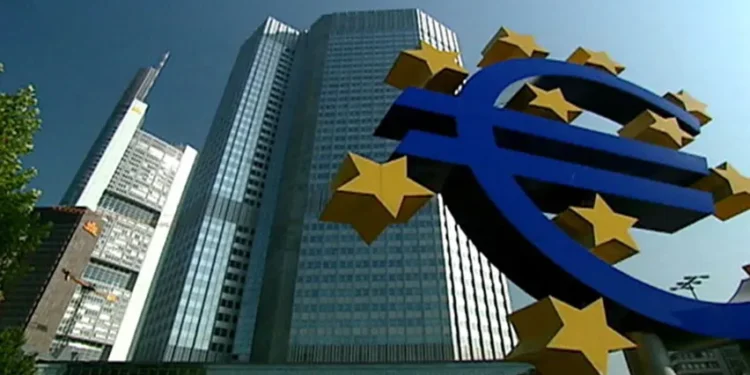The European Central Bank (ECB) is expected to announce another cut to interest rates during its meeting on Thursday, as declining inflation and sluggish economic activity in the eurozone prompt policymakers to reassess their monetary stance.
The ECB’s governing council, composed of 26 members, is convening in Slovenia for one of their regular sessions away from the Frankfurt headquarters. ECB President Christine Lagarde has already arrived in Ljubljana, where she engaged with local traders at a market, sharing insights about current price trends through social media.
Recent economic data suggests that inflation in the eurozone has significantly cooled, with Slovenia reporting an annual consumer price increase of just 0.6 percent in September. Overall, the eurozone’s inflation rate stood at 1.8 percent, marking the first time it has dipped below the ECB’s two percent target in three years.
After two rate cuts earlier this year, including one in September, the ECB initially indicated a preference to wait until December for any further reductions. However, the latest inflation figures have shifted the outlook, leading to a growing consensus among ECB officials that consumer prices are stabilizing after experiencing sharp increases in the aftermath of the COVID-19 pandemic and the Russian invasion of Ukraine.
Francois Villeroy de Galhau, the French central bank governor and an ECB rate-setter, expressed optimism last week, stating that “victory against inflation is in sight” and indicating that another rate cut is likely during Thursday’s meeting.
So far this year, the ECB has reduced its key deposit rate from a peak of four percent in two increments of 25 basis points. According to analysts at Deutsche Bank, there appears to be “little apparent opposition” among policymakers to a further cut of the same magnitude. They characterized this potential decision as “significant,” suggesting it could mark the beginning of a more aggressive easing cycle.
Berenberg bank analyst Holger Schmieding noted that current inflation trends and economic conditions support a “straightforward” cut. Wage growth, which had surged to compensate for rising food and energy prices, is beginning to slow, and the ECB is expected to overlook a slight rebound in inflation anticipated later in the year.
As the eurozone grapples with economic weakness, the ECB’s forecasts, released last month, indicated a projected growth rate of only 0.2 percent for the third quarter. A series of negative sentiment indicators has reinforced the need for action to support households and businesses.
Looking ahead, the ECB has emphasized that its decisions will remain “data dependent.” Market participants are keenly awaiting comments from President Lagarde, who is expected to address the media following the announcement at 2:45 PM local time (1245 GMT). Analysts will closely analyze her remarks for clues regarding the ECB’s future monetary policy direction.
If the ECB proceeds with the anticipated rate cut, the key deposit rate will decrease to three percent. Observers suggest that this move may be just the beginning, with some analysts forecasting additional rate reductions at subsequent meetings. HSBC bank analyst Chris Hare noted that the ECB might implement a series of quarter-point cuts through April, potentially lowering the deposit rate to 2.25 percent—an adjustment that could shift the economic environment from neutral to “slightly accommodative.”
As the eurozone navigates these economic challenges, all eyes will be on the ECB’s forthcoming decisions and the implications for both regional growth and inflation control.










